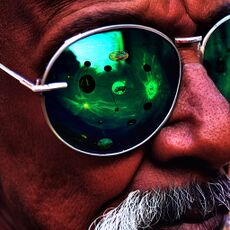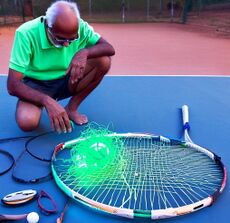Adaptation: Difference between revisions
imported>Jacob Robertson |
No edit summary |
||
| (21 intermediate revisions by 2 users not shown) | |||
| Line 1: | Line 1: | ||
{{Map of Everyday Enlightenment | {{Map of Everyday Enlightenment | ||
|HideBeacons=no | |HideBeacons=no | ||
| | |HideRealms=yes | ||
|HideDeluded=yes | |HideDeluded=yes | ||
|HideLearning=yes | |HideLearning=yes | ||
| Line 11: | Line 11: | ||
|HideAssociation=yes | |HideAssociation=yes | ||
|HidePathways=yes | |HidePathways=yes | ||
| | |HideLenses=yes | ||
|HideTrails=yes | |HideTrails=yes | ||
|HideGuides=yes | |HideGuides=yes | ||
| Line 18: | Line 18: | ||
{{Beacon Info Box | {{Beacon Info Box | ||
|Name={{PAGENAME}} | |Name={{PAGENAME}} | ||
|image=Beacon | |image=Beacon of Adaptation Hold2.jpg | ||
}} | }} | ||
== Overview == | == Overview == | ||
{{ | {{Adaptation Overview}} | ||
== {{Header Type|Type=Credo|Name=Embrace the Change}} == | == {{Header Type|Type=Credo|Name=Embrace the Change}} == | ||
| Line 33: | Line 33: | ||
== Primary Lenses of Adaptation == | == Primary Lenses of Adaptation == | ||
[[File:Lenses of Adaptation.jpg|alt=Lenses of Adaptation|thumb|Lenses of [[Adaptation]]]] | |||
{{Lenses Overview}} | {{Lenses Overview}} | ||
Through the Lenses of Adaptation, we focus on key elements that refine our journey towards enlightenment, bringing clarity and depth to our understanding and practice of adaptive principles. | Through the Lenses of Adaptation, we focus on key elements that refine our journey towards enlightenment, bringing clarity and depth to our understanding and practice of adaptive principles. | ||
{{Lens Overview|Impermanence}} | |||
{{Impermanence | |||
=== Non-Attachment === | === Non-Attachment === | ||
Non-Attachment is the practice of letting go of our clinging to people, things, thoughts, and feelings. It doesn't mean we stop caring or disconnect ourselves from the world; instead, it's about releasing the need for control or possession. Practically, this means being open to experiences without trying to grasp them or push them away. Incorporating non-attachment into your life means creating space for freedom and peace, reducing suffering caused by our attachments, and facilitating better adaptation to life's changes. | Non-Attachment is the practice of letting go of our clinging to people, things, thoughts, and feelings. It doesn't mean we stop caring or disconnect ourselves from the world; instead, it's about releasing the need for control or possession. Practically, this means being open to experiences without trying to grasp them or push them away. Incorporating non-attachment into your life means creating space for freedom and peace, reducing suffering caused by our attachments, and facilitating better adaptation to life's changes. | ||
{{Lens Overview|Non-Seeking}} | |||
{{Lens Overview|Non-Aversion}} | |||
Non-Aversion | |||
=== Equanimity === | === Equanimity === | ||
Equanimity is a state of mental calmness and composure, especially in challenging situations. It's about remaining balanced and undisturbed regardless of the ups and downs of life. Practicing equanimity helps us to respond rather than react impulsively, thus fostering healthier relationships and a more peaceful life. The end goal of developing equanimity is to achieve a balanced mind, offering us the stability needed to adapt effectively to changing circumstances. | Equanimity is a state of mental calmness and composure, especially in challenging situations. It's about remaining balanced and undisturbed regardless of the ups and downs of life. Practicing equanimity helps us to respond rather than react impulsively, thus fostering healthier relationships and a more peaceful life. The end goal of developing equanimity is to achieve a balanced mind, offering us the stability needed to adapt effectively to changing circumstances. | ||
| Line 55: | Line 49: | ||
There are other lenses of Adaptation that contribute to our ability to Embrace the Change. | There are other lenses of Adaptation that contribute to our ability to Embrace the Change. | ||
{{Lens Overview|Emptiness}} | |||
{{Lens Overview|Middle Way}} | |||
{{Lens Overview|Gratitude}} | |||
{{Lens Overview|Dependent Origination}} | |||
{{Lens Overview|Special Composition}} | |||
=== | == Resources == | ||
{{Resources Section|Type=Beacons|Value=Adaptation}} | |||
{{#set: | {{#set: | ||
Lenses=Impermanence | Lenses=Impermanence | ||
| Line 106: | Line 68: | ||
[[Category:Beacons|{{Category Marker}}]] | [[Category:Beacons|{{Category Marker}}]] | ||
{{Page Type|Type=Beacon|Name={{PAGENAME}}}} | {{Page Type|Type=Beacon|Name={{PAGENAME}}}} | ||
{{DEFAULTSORT:Beacon2}} | |||
Latest revision as of 14:07, 30 September 2023
| Beacon: Adaptation | |
|---|---|
| Credo | Embrace the Change |
| Lenses | Impermanence Non-Seeking Non-Aversion Emptiness Middle Way Gratitude Dependent Origination Special Composition |
Overview
Adaptation, as a Beacon of Everyday Enlightenment, pertains to the acceptance and welcoming of life's impermanence. Adaptation focuses on key concepts like Impermanence, Non-Attachment, Non-Seeking and Non-Aversion, all revolving around our ability to flow harmoniously with life's constant shifts and changes.
The practice begins with understanding Impermanence, appreciating the transient nature of all phenomena, and gradually cultivating Non-Attachment to the desire for permanence in a world that's fundamentally transient. This naturally leads to Non-Seeking and Non-Aversion, attitudes that enable us to face life's fluctuations without craving desirable experiences or averting less pleasant ones.
Deeper exploration introduces us to concepts like Acceptance, Flexibility, and Resilience. These principles invite us to be comfortable amidst ambiguity, navigate life's changes smoothly, recognize the continuous movement in our experiences, acknowledge the ever-present evolution of all phenomena, and accept drastic changes as part of life.
Credo: Embrace the Change
Embracing the Change involves accepting and welcoming the impermanent nature of all phenomena. This understanding goes beyond the intellectual acknowledgement of the transitory nature of life, seeking to deeply internalize this concept in all aspects of our existence. Embracing the change doesn't mean being indifferent or unresponsive to life events; instead, it signifies actively acknowledging the ebb and flow of life and willingly adapting to its rhythms.
Practically speaking, this can be done by observing changes in our immediate environment and within ourselves, consciously acknowledging life's transitions, and letting go of the desire for permanence. This process involves welcoming new experiences without resistance, and accepting the departure of old ones without clinging.
The application of this Credo in our daily lives involves acknowledging the impermanence of emotions, thoughts, relationships, and material possessions. It means becoming comfortable with uncertainty and cultivating the ability to adapt to changing circumstances. It requires an understanding that even our sense of self is not a fixed entity, but is constantly evolving and changing.
The ultimate goal of embracing change is to attain a sense of peace and equanimity in the face of life's constant flux. It allows us to better manage life's ups and downs, reducing the suffering caused by resistance to change. By embracing change, we move towards freedom from attachments and aversions, and open ourselves up to a richer, more varied, and dynamic experience of life. This acceptance and flexibility form the foundation for a life lived in harmony with the way things truly are, and is a key aspect of the path to enlightenment.
Primary Lenses of Adaptation

Lenses, in the context of the Beacons of Everyday Enlightenment represent more specific concepts and practices through which we can understand the rich meaning of each Beacon. There are Primary Lenses, which are the most commonly understood and most robust meditative concepts, and there are Other Lenses which are a collection of other closely related ideas for that Beacon. Through the Lenses of Adaptation, we focus on key elements that refine our journey towards enlightenment, bringing clarity and depth to our understanding and practice of adaptive principles.
Impermanence
 | |
| Lens: Impermanence | |
|---|---|
| Beacons | Adaptation |
| Landmarks | Impermanence Basic Understanding |
Impermanence, a fundamental concept deeply woven into the fabric of existence, is the understanding that all phenomena, without exception, are in a constant state of change. This Lens focuses on observing the transitory nature of thoughts, emotions, sensations, and external circumstances. When we fully internalize this concept, we realize that everything we experience — joy, suffering, thoughts, identities — are not static but are dynamic and fleeting. This understanding leads to an acceptance and even an embracing of change, contributing to a sense of calm, resilience, and peace amidst the ebb and flow of life. The reality of impermanence invites us to live fully in the present moment, cherishing it as a unique and unrepeatable snapshot of life.
Non-Attachment
Non-Attachment is the practice of letting go of our clinging to people, things, thoughts, and feelings. It doesn't mean we stop caring or disconnect ourselves from the world; instead, it's about releasing the need for control or possession. Practically, this means being open to experiences without trying to grasp them or push them away. Incorporating non-attachment into your life means creating space for freedom and peace, reducing suffering caused by our attachments, and facilitating better adaptation to life's changes.
Non-Seeking
 | |
| Lens: Non-Seeking | |
|---|---|
| Beacons | Adaptation |
| Landmarks | Experimenting with Cravings |
Non-Seeking is about breaking free from the endless pursuit of desires. It's recognizing that constant wanting often leads to a state of dissatisfaction. Instead, the practice of non-seeking encourages us to find contentment in the present moment, without constant longing for something else. The ultimate aim of non-seeking is to foster inner peace and satisfaction, diminishing the turbulence of ceaseless desire and thereby enabling a more harmonious adaptation to life's unfolding.
Non-Aversion
 | |
| Lens: Non-Aversion | |
|---|---|
| Beacons | Adaptation |
| Landmarks | Learn About Non-Aversion |
Non-Aversion, as a concept, invites us to avoid repulsion from negative experiences or sensations. It's about accepting and facing uncomfortable situations, feelings, or thoughts without trying to escape from them. Applying Non-Aversion in our lives means developing a greater resilience to adversity and discomfort. The end-goal is to cultivate emotional balance and courage, promoting a healthier and more flexible approach to life's challenges.
Equanimity
Equanimity is a state of mental calmness and composure, especially in challenging situations. It's about remaining balanced and undisturbed regardless of the ups and downs of life. Practicing equanimity helps us to respond rather than react impulsively, thus fostering healthier relationships and a more peaceful life. The end goal of developing equanimity is to achieve a balanced mind, offering us the stability needed to adapt effectively to changing circumstances.
Other Lenses
There are other lenses of Adaptation that contribute to our ability to Embrace the Change.
Emptiness
 | |
| Lens: Emptiness | |
|---|---|
| Beacons | Adaptation |
Emptiness is another way of understanding the nature and reality of Impermanence and Nonself. Starting with the recognition that all things lack inherent existence and are empty of self-nature, and leading to the realization that all things are Interconnected and therefore there is also no permanent or separate self. Each of these understandings brings greater peace and clarity, and also contributes to our own Non-Seeking, Non-Aversion and Non-Attachment.
Middle Way
 | |
| Lens: Middle Way | |
|---|---|
| Beacons | Adaptation |
The Middle Way is a balanced approach to life and practice, avoiding extremes of indulgence and asceticism. It means understanding that Non-Aversion and Non-Seeking are ways of understanding reality, not goals to be aspired to. Similarly, many of the Lenses could be taken to unhealthy extremes or twisted in their meanings. The Shadows give examples for many of the Lenses.
Gratitude
 | |
| Lens: Gratitude | |
|---|---|
| Beacons | Adaptation |
The practice of Gratitude in the context of the Lens of Adaptation is specifically about amplifying the parts of experience that represent a journey towards Enlightenment. This amplification leads to greater resilience and adaptability. For example, when we are faced with challenges, we are already primed with the knowledge that we are capable of overcoming challenges and experiencing that satisfaction. We are also aware that life will always be changing and that we can find peace and clarity under many different circumstances. These insights are especially relevant in our practice of Non-Seeking and Impermanence.
Dependent Origination
 | |
| Lens: Dependent Origination | |
|---|---|
| Beacons | Adaptation |
Dependent Origination is a way of understanding existence as a whole made up of intimately connected parts. We may often think in terms of "cause and effect", and another insight is to see that things are so interconnected that a simple cause/effect relationship is a needlessly reductive perspective. Additionally, we can see that all things in our consciousness do not come about on their own but have a dependency on other things simply for them to exist in their current form. To take an extremely simple example, you may enjoy some coffee or tea, but how dependent is that enjoyment on the mug holding your drink? Another aspect of Dependent Origination is that just as everything relies on other things for their existence, so do those same things enable the existence of other things. Closely related to Dependent Origination are the Lenses of Impermanence and Emptiness, which all taken together can show us how everything we experience lacks a permanent or substantive quality when understood through these concepts.
Special Composition
 | |
| Lens: Special Composition | |
|---|---|
| Beacons | Adaptation |
| Landmarks | Observe Parts of a Whole Perceiving Parts as a Whole |
The idea of Special Composition is about recognizing that the world as we experience it is broken down into many, many arbitrary ways of conceptualizing how things work together or against each other. Special Composition touches on each of the Beacons, but is placed within the Beacon of Adaptation because it deals primarily with the way we perceive "things" which enables the other Lenses of Adaptation such as Non-Seeking and Impermanence.
Resources
- Experience the Truth of No Self - "The teaching of anatta, or nonself, is considered the most liberating tenet of the Buddhist teachings. Describing how we’re bound, fettered, and limited by the sense of ourselves as separate and self-existing, this teaching offers the possibility of unbinding and freeing the heart and mind."
- Mereology - "In logic, philosophy and related fields, mereology ... is the study of parts and the wholes they form."
- Impermanence is Buddha Nature - "Change isn't just a fact of life we have to accept and work with... To feel the pain of impermanence and loss can be a profoundly beautiful reminder of what it means to exist."
- Material Composition - "A material composite object is an object composed of two or more material parts. The world, it seems, is simply awash with such things."
- Different Answers to the Special Composition Question - "Our intuition tells us that four legs and a tabletop make a table and that four walls and a roof make a house. However, I think we can all agree that a birdhouse and a pair of shoes do not compose a further object. The Question of Material Composition seeks to find the reason for this."
- Middle Way - "... a middle way that avoided the two extremes of self-indulgence or self-denial ... a view that is free from the extremes of eternalism and nihilism."
- Pratītyasamutpāda - "... "if this exists, that exists; if this ceases to exist, that also ceases to exist" ... [all things] arise in dependence upon other things."
- Sunyata in Buddhism: Understanding the Concept of Emptiness - "Sunyata, also known as emptiness and a central concept in Buddhism, explores the interdependence and interconnection of everything."
- How Mindfulness and Gratitude Go Hand in Hand - "Gratitude allows you to notice your blessings and create balance from life’s difficulties. Mindfulness helps you handle tough times with grace, acceptance, and surrender. Together, these practices nurture what Buddhists call the “Higher Self” within you."
- Dvesha (Aversion) - "... (hate, aversion) is the opposite of raga (lust, desire) ..."
- A Meditation for Decentering Your "Self" (And Why You Should Do It) - "When we realize that our “self” is really a process and not a fixed thing we can make space for less self-absorption and more compassion for others."
- Raga (Attachment) - "... any form of "greed, sensuality, lust, desire" or "attachment to a sensory object""
